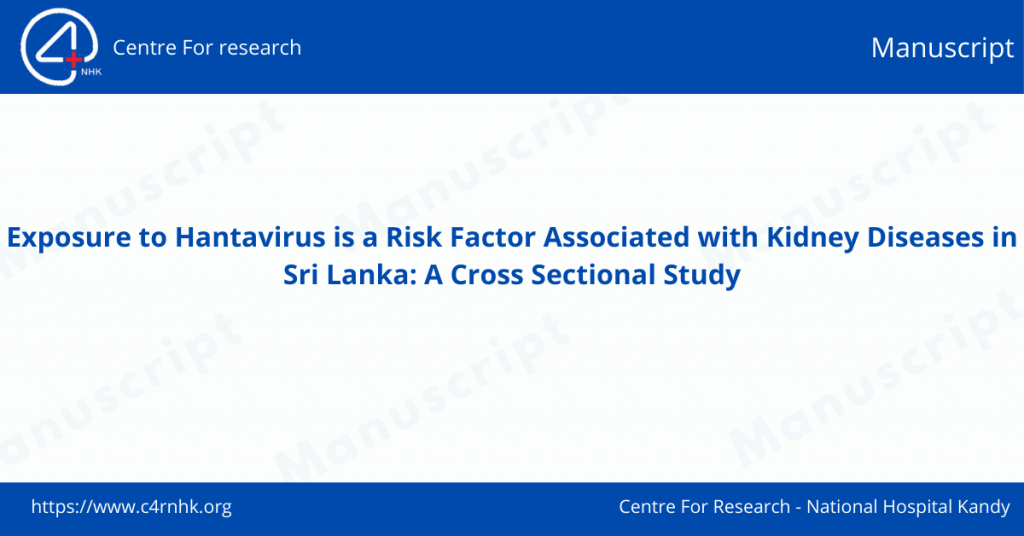Point prevalence of chronic kidney disease of uncertain etiology in a suspected endemic region determined using predefined cutoffs for markers of kidney disease: a pilot study.
Zeid Badurdeen1 , Tilak D.J. Abeysekera1 , Lishantha Gunaratne2 , Samantha Ratnayake3 , Neelakanthi V.I. Ratnatunga4 and Nishantha Nanayakkara5
1 Center for Education Research and Training on Kidney Diseases (CERTKiD), Faculty of Medicine, University of Peradeniya, Sri Lanka.
2 Renal Unit, District Hospital, Girandurukotte, Sri Lanka.
3 Sri Lanka Institute of Nanotechnology (SLINTEC), Homagama, Sri Lanka.
4 Department of Pathology, Faculty of Medicine, University of Peradeniya, Sri Lanka.
5 Transplants and Dialysis Unit, Teaching Hospital, Kandy, Sri Lanka.
Abstract
Background: Chronic Kidney Disease of uncertain etiology (CKDu) affecting many tropical countries in the world has reached epidemic proportions. Studies on the diagnostic accuracy including data on the performance of existing renal tests in targeted population screenings of CKDu are limited.
Objectives
This study aimed to determine the point prevalence of CKDu using selected screening markers of kidney disease with predefined cutoffs established by the authors (Ratnayake et al., 2017).
Method
One hundred individuals from a population of 5718 who lived in a CKDu-endemic region were selected. After the exclusion of diabetes, hypertension, and known renal diseases, dipstick proteinuria, serum cystatin C, serum creatinine, and urine albumin creatinine ratio (ACR) were estimated on fifty individuals recruited. Individuals with test results above the predefined cutoff values were considered as having or suspected to be having CKDu.
Results
The respective determinations of diagnostic accuracy of each test at the optimal cutoff for a CKDu population, and detection of positive cases as a percentage of total tests were: serum cystatin-C accuracy – 0.8, detects14% at ≥1.22 mg/L, serum creatinine accuracy – 0.73, detects 6% at ≥115 and ≥96 μmol/L for males and females respectively, and ACR accuracy – 0.68, detects 8% and 26% at ≥ 30mg/g and ≥12.6 mg/g cutoffs respectively.
Conclusion
In the targeted population screening of CKDu, detection of suspected cases, or point prevalence by serum creatinine was lower than that of cystatin C and ACR.
Keywords: Chronic Kidney Disease of uncertain aetiology, screening markers, Creatinine, Albumin creatinine ratio, cystatin C.
![]()




